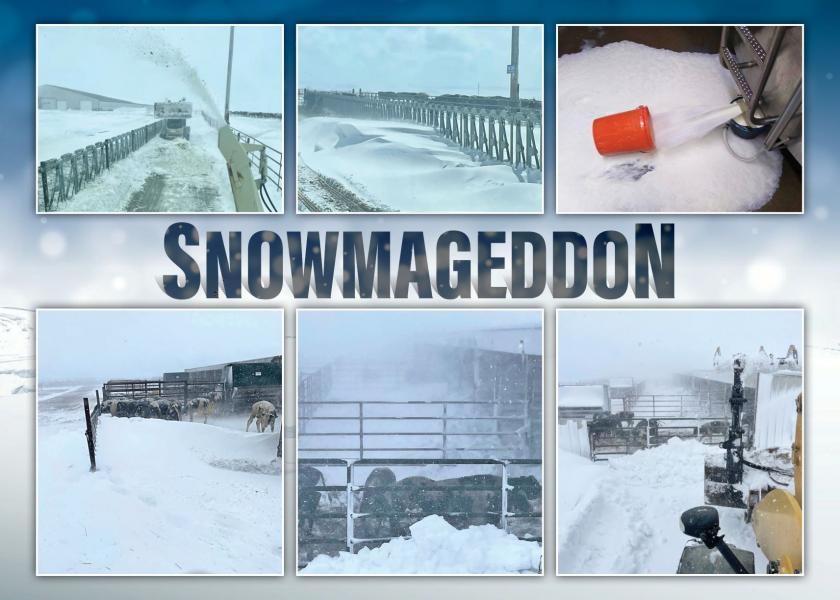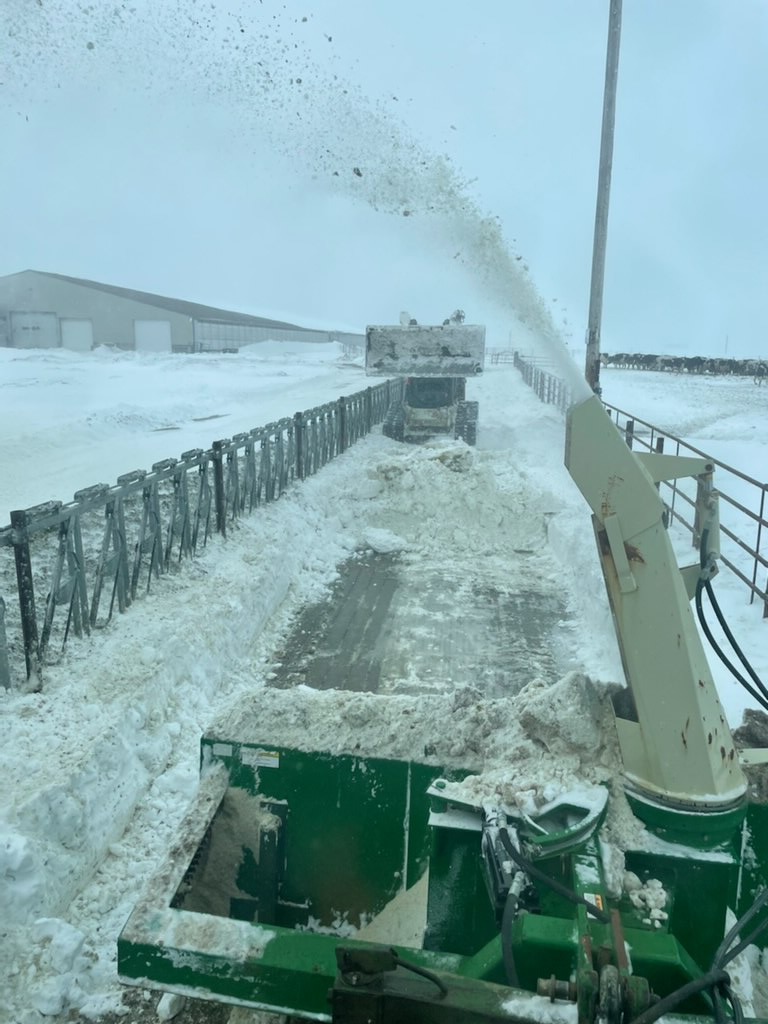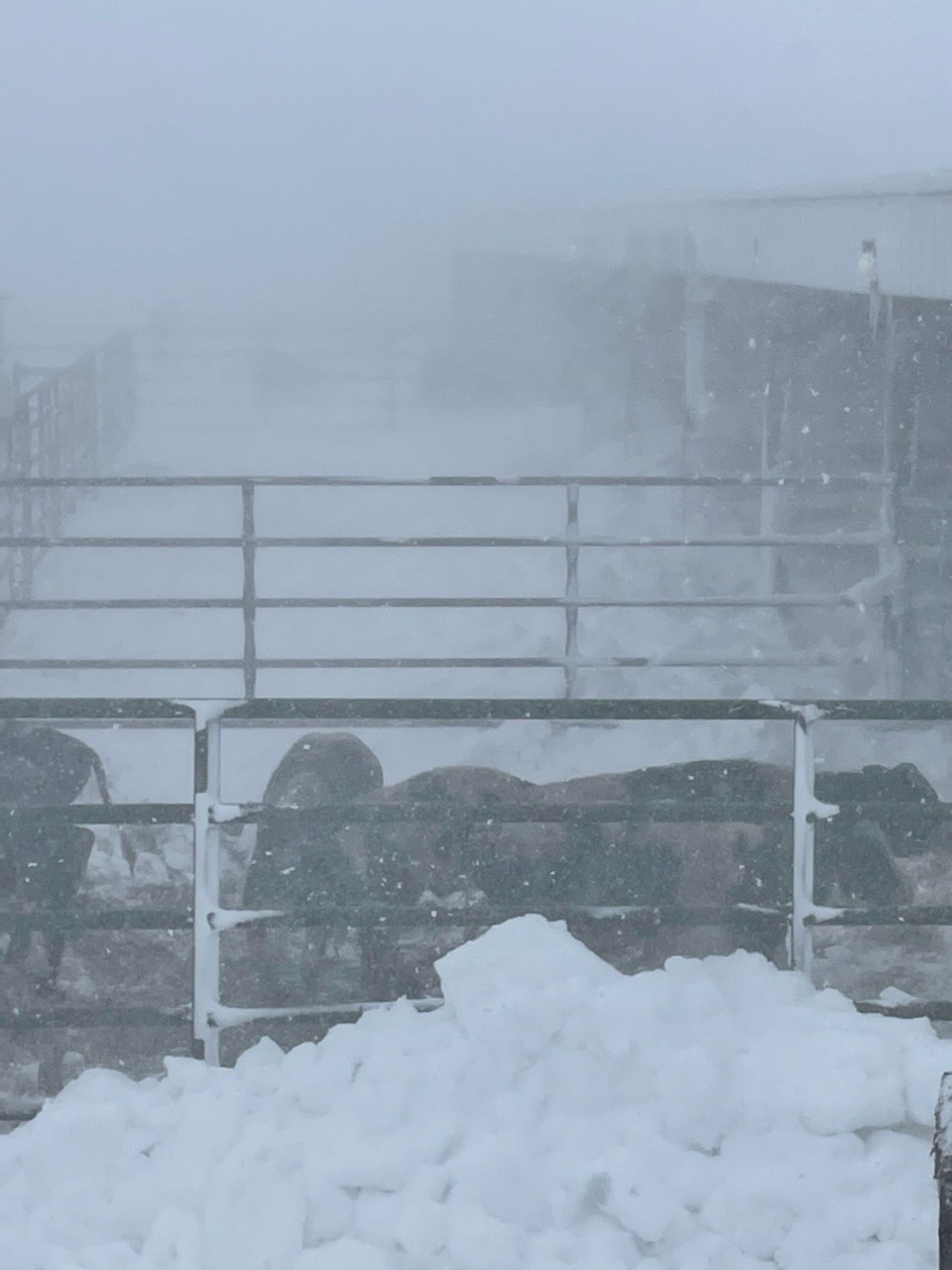Snowmageddon Dumps Massive Snow and Headaches on North Dakota Dairy Farmers

The roads have been cleared and the sun is now peeking out in North Dakota after farmers spent the bulk of their Easter holiday weekend pushing snow when the storm of the century – Snowmageddon – plowed through the northern prairie.
Located 12 miles north of Bismark, Northern Lights Dairy received 18.5 inches of snow in one day, with another 2.5 inches falling the next. The dairy milks 750 cows three times daily, and as they tried to prepare for Snowmageddon, their processor dropped off an extra tanker truck to help them get through the storm and keep the milk refrigerated.

“Our plant brought an extra tanker before the storm, so once the bulk tank was full, we could fill up the tanker if the milk truck couldn’t make it,” Jennifer Holle, one of the owners, said. “The milk truck didn’t come, and there were four milkings that we had to dump because it wouldn’t fit in the tanker anymore because it was full.”
When the storm rolled in, some of Northern Lights employees who live in town, located 13 miles away, could not make it to work for two days because of road closures and weather. However, the milking crew, who lives on-site, could.
In-between milkings, the Northern Lights work crew had to dig out heifer pens so their cattle could have access to the waters and the feed alleys.

“It was very cold, and the wind was really bad,” Jennifer shares. “Animals were covered in icicles and snowdrifts are taller than our horse barns.”
Just 90 miles west, Rachel Howie also feels the headache the winter storm has caused. Alongside her father, Dean Karsky, and her brother, Derek, Howie’s family owns and operates Karsky Dairy near Dickinson. The family milks 220 cows and their milk is scheduled for every-other-day pickup.
“The milk truck picked up on Tuesday and then was scheduled for Thursday, but the roads were closed and couldn’t make it,” she shares.
With 30 inches of snow causing roads closures, the family was forced to dump 11,000 pounds of milk down the drain. Her father, Dean, says, “In today’s market, that’s about $2,750 we just dumped down the drain. With the high feed cost and labor and everything else, you can’t afford to be dumping everything down the drain.”

The interstate opened the next day, so the family was back to shipping milk again. Howie reports that 75% of their milk loss will be covered through their processor, DFA.
The family was thankful only one cow calved during the century-making storm.
“The blizzard was so bad, we didn’t want to risk getting her to the parlor and having her fall down,” Howie reports. “So, we waited until daylight to get her milked and we were thankful no calves were born until the blizzard stopped.”
Looking at their fields, the Karsky family is unsure when spring planting will begin. The farm's liquid manure has yet to be injected into their fields, and now with two and a half feet of snow on the fields, it's unlikely that spring fieldwork will begin anytime soon.
“We have been in a drought for the last two years, so we need the moisture, but could do without all the snow,” Howie says.
Another storm is forecasted for North Dakota this upcoming weekend, where they could get another 8-16 inches of snow. Both producers say enough is enough, but also understand others in the state have had it worst. They share that a Towner, N.D. dairy farm freestall barn roof collapsed due to all the snow and their 1,100 head of cattle had to be relocated.







